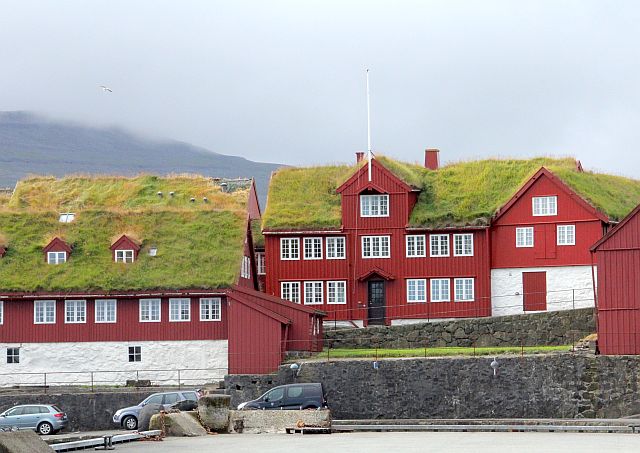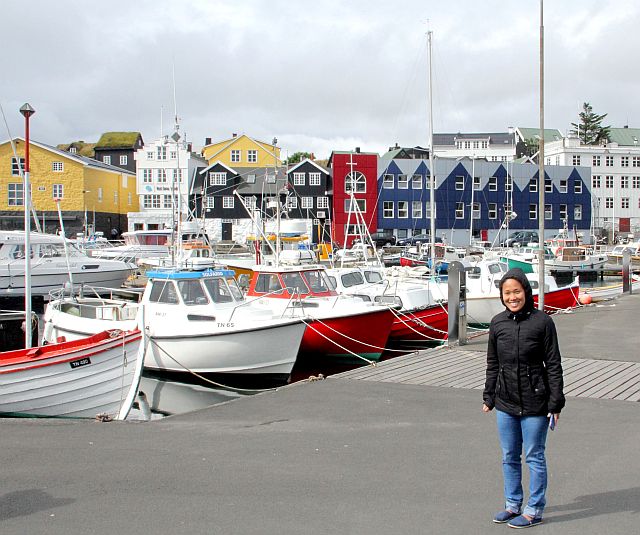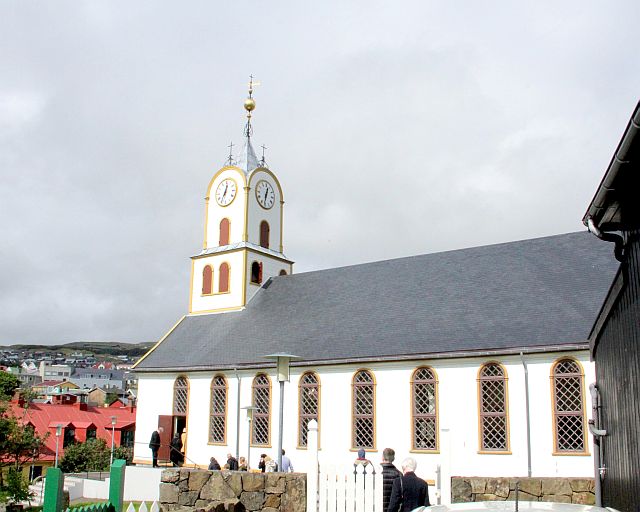
Tórshavn, a beautiful land of grass roofs
FAROE Islands. It’s not likely that the average person would be able to pinpoint it on the map. I have to admit, when I first found out that we would be traveling there, I had to do a research as I had never heard of it before. The tiny archipelago is located about halfway between Norway and Iceland with a total population of less than 50,000 people. While technically considered part of the country of Denmark, the Faroe Islands have their own system of government, including their own Prime Minister.
Our visit was to the capital city of Tórshavn, only 4 degrees south of the Arctic Circle. For a capital city, it was pretty quaint with only 13,000 residents; a hard cry from some of the sprawling urban metropolises we tend to see. The weather is usually on the chilly side, the warmest month of the year is August with an average high temperature of 13 degrees. During our visit, it was quite cool, and we had to bundle up to brave the cool winds.
While the Tórshavn of today has a quiet, village-type atmosphere, it was a bustling trade center developed by the Vikings over 1,200 years ago. Yes, those Vikings—the Norse seafarers known for conquering and destroying. For a few hundred years, the islands were under the control of the Vikings and then the kingdom of Norway before being turned over to the kingdom of Denmark as a result of a war treaty in 1388.
As soon as we arrived, it became clear that this was a very unique place. The rugged landscape was similar to others in the Arctic region. There
are sprawling flatlands near the coast but not far in the distance are jagged mountains. Due to the overcast weather, we didn’t venture too far off the main areas just in case a storm popped up.

Anna at the port
Each place we visited has specific things that stood out long after we left. In the city of Tórshavn, it had to be the design of the buildings. There was one very unique characteristic of so many of the buildings we visited—grass on the roof! Not just a small patch, but many of the buildings are covered entirely in green grass. At first glimpse, it starts to challenge the eyes to see where the land ends and the top of the buildings begins.
As we approached some buildings, we could also see that the sides were built with metal, just like the metal roofing material here in the Philippines. It was such a distinctive look—grass on the roof and roofing material for the sides.
As anyone can imagine, the Faroe Islands are quite isolated and remote. After the Vikings came, other than trade ships, the islands were quite on their own for 1,200 years. This had led to several species of animals that are only found on the archipelago. They have their own domestic versions of the pony, cow, sheep, goose and duck. During our walk, we saw horses playing in what appeared to be a neighborhood.
One cute animal that finds itself all over the island is the Faroese puffin. You can see them in nature, but they have also become a part of culture —touristy souvenir stores, even in some graffiti we found on the side of a building. When asking about the birds to some locals, we found out they have made their way into one other part of the culture: the menu. That’s right, there are a number of traditional recipes from the islands for cooking the
little birds.

Tórshavn Cathedral
Walking around the city, we could see that the city is a mix of traditional and modern. We visited the Tórshavn Cathedral, built in the late 1700s with
the official religion, the Church of the Faroe Islands. Like most Scandinavian and Baltic regions, the national church is a branch off of the Evangelical/Lutheran church. A short walk down the street is the way more modern church, the Vesturkirkjan, with a pyramid-shaped copper spire.
This church, also Lutheran, was built more recently in 1975.
One of the most traditional areas we visited is called the Tinganes. This is the oldest part of the capital city and consists of small, brightly colored wooden buildings. Of course wooden buildings are rather susceptible to fire so most have been rebuilt over the years, but the oldest standing one now is approximately 500 years old. The harbor front old town district is reminiscent of other Baltic cities, one of which is Bergen, the inspiration for the town front in the Disney animated movie “Frozen.”
While the Faroe Islands might not have been on my travel bucket list, it was a fun place to visit to get a sense of life in a more remote place.
It did make me a little more aware of the conveniences of home. In the end, that is one of the reasons to travel, to see cultures you might not be able to even read about and yet also bring it all back home.

